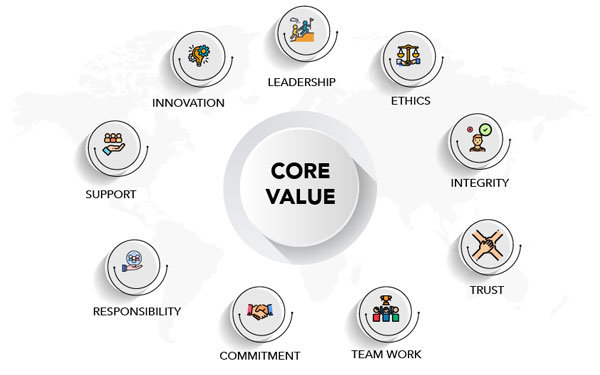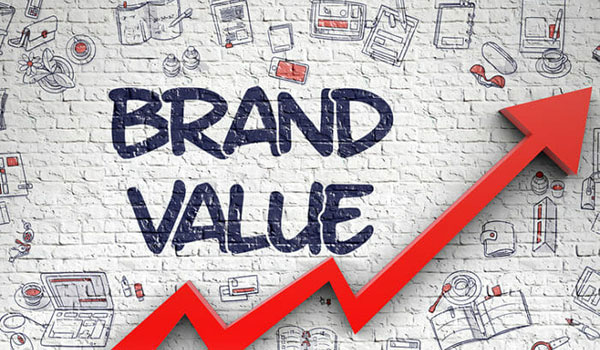
What is Company (Corporate) Culture? Elements and Types

It’s easy to say that company culture is just for big corporations like Google, but the truth is that every company should have it. In this blog post, we will learn what company culture really is and how it affects the company's marketing programs.
Corporate culture is not only an important factor in engaging the members of an organization, but also helps them achieve business success. Therefore, businesses need to create a unique culture, consistent with their sustainable development goals. To do that, businesses must clearly understand the characteristics of different types of culture and choose an appropriate corporate culture development direction. It’s easy to say that company culture is just for big corporations like Google, but the truth is that every company should have it. Culture can be everything from how people dress for work to what music they listen to on their headphones while working. It also affects the outcome of marketing activities. In this blog post, we will learn what company culture really is and how it affects the company's marketing programs.
What is Company Culture?
The definition of company culture is simply the way people behave in a particular organization. Company culture (corporate culture) includes the values, beliefs, rules, standards and behaviors formed during the existence and development of an enterprise. These cultural elements are recognized and followed by everyone in an organization. Besides, corporate culture also shows the working style and business identity of an enterprise. And yes, it can change from one business to another or even from department to department. For example, you could be working for a software development company that focuses on coding with dress codes and has no strict rules at all about employees' appearance (and that will reflect in their marketing), but for a financial institution, it's more likely that employees should wear formal office clothes and refrain from tattoos or piercings.
However, company culture does not only talk about rules and regulations. It also talks about what the company believes in and is willing to do for its customers. For example, if you work in finance, you might expect your banking company to have a very strict security system for online banking in order to ensure the safety of its customers' money. This is an example of how every organization has something that it believes in and wants to prioritize. What does this mean for marketing? It means that marketing should be more likely to focus on making sure their clients and customers are safe, because that's what the company believes in. It also means that marketing will prioritize certain things like security and safety more than others (like a tech company would).
In short, company culture is a set of factors (rules, personalities, belivies...) that affect how people in a certain organization behave with each other and how it behaves with external forces (customers, suppliers, governments, communities...).
Short history of Company Culture.
In the 1960s, corporate culture awareness emerged in business organizations and universities. The term 'company culture' was first used in the 1960s when Peter Drucker used it as one of his key concepts. However, even before then, this concept existed in other forms. For example, in 1841 and 1922, Mary Parker Follet and Elton Mayo respectively created their own theories related to work and social groups. In 1933, Max Weber developed his concept of bureaucracy. All these theories and concepts talked about the same thing in a different way - they talked about how people work together and treat each other, which forms company culture.
This idea has changed a lot over time with new studies being made every day on work factors and relationships between co-workers. The main idea was always the same - people are what makes an organization work, and how they act together determines the culture of that organization.
Then, during the early 1980s, “Corporate Culture” began to develop and by the 1990s the term was widely known. At that time, managers, sociologists and other scholars used corporate culture to describe the characteristics of a company. These characteristics include: beliefs, behaviors, company's value system, management strategy, working environment, relationships, communication methods and employees' attitudes.
By 2015, corporate culture is not only created by the company founder, management board and employees, but also influenced by national culture and traditions, economic trends, international trade, company size and product. For example, the appearance of the following terms also affects the development of corporate culture more or less:
“Multiculturalism” is the intersection between different cultures in an organization and this intersection is formed by individuals from different backgrounds.
“Culture shock” is a term that describes the confusion and anxiety when people conduct business in a society different from their own.
“Reverse culture shock” is a common phenomenon for those who have spent a long time abroad doing business and have difficulty preparing before returning home.
Therefore, nowadays, when forming corporate culture, organizations are also gradually paying attention to consider the above factors in order to facilitate employee engagement, increase labor efficiency and improve business operations. In the context of globalization.
Elements of corporate culture
A corporate culture is made up of many factors. However, there are 5 main factors that play an important role in corporate culture: vision, mission, core values, practical values and people.
1. Vision
Any organization needs to define specific goals and strategic vision before going into operation. According to Peter Senge, “Vision is the picture of the future that you want to paint”. From that picture, you can define for yourself specific goals to guide the steps to carry out business activities more clearly. Once you have determined the direction, you will proceed to work more effectively. Defining a vision not only helps business operations but also orients the development of a clear corporate culture. Although the vision statement seems short and simple, it is the guideline for all decisions and actions in the company.
2. Mission
An enterprise's mission is a long-term goal that represents the reason for that business to form, develop and exist. Referring to the mission, means to mention the things to be done in the future and the goals that the members of the organization work together to achieve. It can be said that the mission is like a manifesto expressing the values and benefits that the company creates and brings to customers.
In addition, the mission also plays the role of reminding each member of the promotion of a corporate culture that adheres to the responsibilities that the business has set, and helps them visualize the path and the way to do it. to reach the vision.
3. Core values
The core values of the business are also the core of the company culture. This is called a measure, a standard to adjust behavior and perspective to achieve the vision of the business. Therefore, core values are not tied to originality as much but require the maintenance of business performance. In corporate culture, values revolve around simple topics such as: employees, professionalism, customers, community, etc. It is the commitment to well implement the set values that is key. factors that bring uniqueness to the corporate culture.
4. Sustainable value
Corporate culture needs to be associated with sustainable elements. To develop a positive corporate culture, the company needs to invest in development in accordance with its core values and stated vision. If a company determines that the human factor is the most important to an organization, it should invest its heart and resources in training employees, taking care of the health and well-being of individuals. For example, at Sparespace, the culture of "flat, open, creative" is clearly shown in the management apparatus with very few layers of leadership between employees and managers. In fact, employees feel that their words have more weight if they are not managed by too many levels of leadership, thereby their ability to be independent, creative and thinking is significantly improved.
5. People
Corporate culture is created to promote individuals to work effectively, creating conditions for the development of a good working environment for employees. But to do that, the human factor also plays a very important role. For example: Who will come up with the vision? Who will implement the core values? Who will be in charge of realizing those values? In particular, who will contribute to building and maintaining the corporate culture? It could only be humans.
Dr. Steven Hunt, working at Monster company, once shared: "A person who works in a culture they love will stick around longer and help strengthen the culture that the organization already has." Therefore, for a company, personnel who are not only good but also suitable for the company will contribute to creating and strengthening the corporate culture.
The effects of Company Culture on marketing
So, we learned that company culture is basically a set of factors (believes, rules...), but it also talks about why those factors are set in place and what they are for. This has an impact on the activities that marketing performs:
1. Company culture affects its internal branding.
Internal branding is the process of building a positive brand image and identity for employees. For example, if your company believes in customer satisfaction and providing great services to customers at all times, it would mean that you need all your employees to be on the same page when it comes to these values. You also want them not only displaying the right attitude towards the customer but also being able to provide the best possible service. The result of this is a consistent brand identity that employees can display while working with customers face-to-face or online, and it's also something that will attract potential new customers.
2. Company culture affects the effectiveness of cooperation (teamwork) in marketing activities.
In any case, no matter how big or small your company is, you will most likely have some form of teamwork in your marketing activities. For example, in the case of a smaller business where one person manages both social media and analytics (or maybe even everything related to digital marketing), their experience might include them working by themselves for many years. As a result, they might get used to working in that way and might not be as effective when it comes to teamwork.
On the other hand, if each employee is aware of company culture and knows how important cooperation is for the positive experience that customer receive, they will work better together and provide great results.
3. Company culture affects your marketing communication.
Your company culture determines the words you use in your marketing campaigns, the tone you talk in and even how your employees interact with potential customers on social media. For example, if your brand is built around fun and creativity, using 'serious' language would be counterproductive (and vice versa). As a result of this insight, I started using more casual language and tone in my communication to focus on the company's culture.
4. Company culture affects marketing budgeting processes.
A lot of companies have started using a market-oriented approach when it comes to their marketing budgets: they determine first what results they want from their activities, and then work out how much would be needed for those efforts. This is a time-proven approach that worked well in the past as marketers could be sure of how much effect their activities would have on revenue targets. However, this approach becomes problematic when it comes to marketing activities where the 'marketing budget' is only one small part of larger business expenses, like sales or R&D costs for example. This is where 'context marketing' can come to the rescue. If they are fully aware of company culture, marketers can make use of it when trying to convince other employees of the need for additional budget for their activities.
5. Company culture affect the company's brand value.
This is a no-brainer, really. A successful company culture that leads to having a happy and motivated workforce can go a long way in terms of increasing the brand image and value. In fact, there are even companies who have built their entire marketing strategies around their cultures. For example, Buffer uses transparency as part of its marketing efforts (and in all other aspects of running the company), and use it as a differentiator compared to competitors.
Common types of company culture
Companies usually have different cultures. However, many companies share some common points in their culture, which can be grouped as common types of company culture:
1. Discipline-orientation company culture (Hierarchy/Traditional Corporate Culture).
This type of company culture is often preferred in Asian companies (such as Japan, Korea) where discipline is one of its top priority. This type of company culture is usually found in large corporations which have many departments organized as a hierarchy. Employees in these companies usually have a more strict and rigid working environment, as well as dress code. Innovation employees is not welcome. Instead, the employees have to follow their manager's plans and work with the team instead of going their own way.
2. Innovation-orientation company culture.
This type of company culture focuses more on creativity, having fun and giving employees the freedom to explore different ways how to improve company's results. Employees might have more flexible working hours compared to their peers in other companies, and they are also allowed to work from home. This is sometimes linked with a casual dress code as well (note: it doesn't mean employees are not taking their jobs seriously - it's all about the visual impression).
3. Collaboration-orientation company culture.
This type of company culture encourages employees to work together and help each other whenever they can. These companies usually have a high turnover rate of employees, as many people don't like working in such an environment - most individuals are more independent-oriented. However, combining individual strength into powerful groups can produce significant results for the company.
4. Horizontal company culture.
This type of company culture is all about providing equality and openness to employees. It's a more modern approach where the managers and employees are on an equal level, which can make it difficult for managers to have an authority over their subordinates. However, this type of company culture usually leads to having very creative employees who will be able to come up with many innovative ideas quickly.
5. Hybrid company culture (a combination of two or more culture types).
As each type of company culture brings its own pros and cons, some companies decide to combine them together to form a new type of company culture where the best aspects are combined into one. This is often done when a company wants to be creative, but at the same time wants to have systematics and discipline.
Conclusion
Company culture is an important factor when it comes to marketing. It can affect the company's brand value, employee motivation and more. In this article you learned about some common types of company cultures that are shared by many companies worldwide.












.png)

.jpg)
.jpg)








